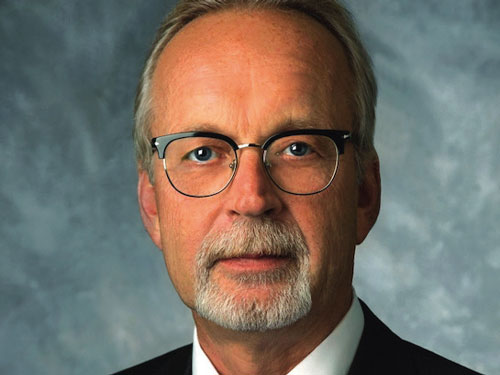In July, the Midwest Association of Rail Shippers (MARS) held its summer meeting in Lake Geneva, WI and the conference’s headliner was James “Jim” Foote, President and CEO of CSX Transportation.
Foote, a rail industry veteran of over four decades, is an outspoken proponent of precision scheduled rail (PSR), a system of rail service designed to optimize operating efficiencies. As it notes in his official CSX website bio: “As COO, he aligned CSX’s Operations and Sales and Marketing Departments to advance the company’s operating model introduced at CSX by the late E. Hunter Harrison.” Hunter Harrison was the progenitor of PSR. In 2003 when Harrison was made CEO of CN, Foote, who was already executive VP of sales and marketing, became a close collaborator in the makeover that is credited with turning the railroad from a $2 billion company to one worth more than $24 billion.

But PSR, and railroading in general, has lately taken a few hits from shippers, employees, and even the government. So, it wasn’t a surprise that Foote took issue with PSR’s naysayers in his speech at the MARS meeting.
Foote said: “Everybody says, oh my God he’s beholden to Wall Street. Do you have any idea how much money CSX has lost because of our failure to move freight? Enormous amounts of money. This doesn’t benefit me. This doesn’t benefit the shareholder. This doesn’t benefit anybody. This is not the way any person would want to run the company. And that’s why we’re working so hard. Because if we don’t serve the customers, we simply don’t make any money. That’s what we’re here for. We need to do a lot of things differently and it has nothing to do with the principles of scheduled railroading, that’s just nonsense.”
Foote’s remarks were aimed at the criticism – from shippers and employees – that the focus of the railroads (all Class 1s, not just CSX) was on catering to investors. From a shipper’s point of view, rail hasn’t done a good job adjusting to the “new normal” post-COVID. Delays have raised havoc with pickups and delivery schedules and whether it is equipment issues, congestion, or crew shortages the numbers certainly make the word “precision” look out of place. Back in May, the Surface Transportation Board (STB) ordered the Class 1 railroads (BNSF, UP, CSX, NS, CN, CP and KCS) to submit on-time data in response to shipper complaints and testimony. When the first submission of “on-time performance” data was submitted (May 13) it was clear from the results that there were problems with rail service. In fairness, because Class 1s operate different systems and collect data differently there are inherent problems with the OTP comparisons the STB collected. Nonetheless, getting the railroads to provide greater visibility and accountability was at the core of the complaint.
Part of the problem for the Class 1s was they didn’t see it coming – the post-COVID freight movements. They expected a return to something approaching 2018, 2019 and it didn’t happen. Railroads were accustomed to the seasonal ebb and flow of employees and simply weren’t prepared for the demand. For example, CSX’s train and engine manning level was around 7,000 in 2019, dropped around a 1,000 employees to 6,000 during the height of the pandemic and grew to 6,800 with recalls. Since then, CSX has hired 2,000 more train and engine staff but around half quit within the first six months.
Foote said of the manning issue: “If I had the decision to make over again …we would have never laid off an employee,” Never. But there was no vision of the future, there was no idea what we expected to encounter.”
Adding, “We’ve hired 2,000 employees and we’re going backwards.” We have an issue with retention… Half of them in the first six months, quit, many of them in the early days of when they’re actually called to work on an assignment, or for the first time when they realize they’re going to work on weekend or a holiday, or their kid’s birthday.”
Still from the labor perspective that has been considerable dissatisfaction with how CSX and other Class 1s have handle employee staffing and they are expressing the feeling with their feet.
Foote, to his credit, sees the need for change: “We need to provide employees with greater flexibility. It is a different kind of bid arrangement, where they can go to work on this kind of job one day, and this kind of job another day – yard jobs, where they can have a regular assignment and work regular days off, and then the people that want to make more money can bid on the road jobs. “We need to understand, and we need to communicate and work more with our employees, so we can change what has clearly become a frustrating environment (for) them. If we’re going to be successful…we have to have a happy productive, unionized workforce.”

